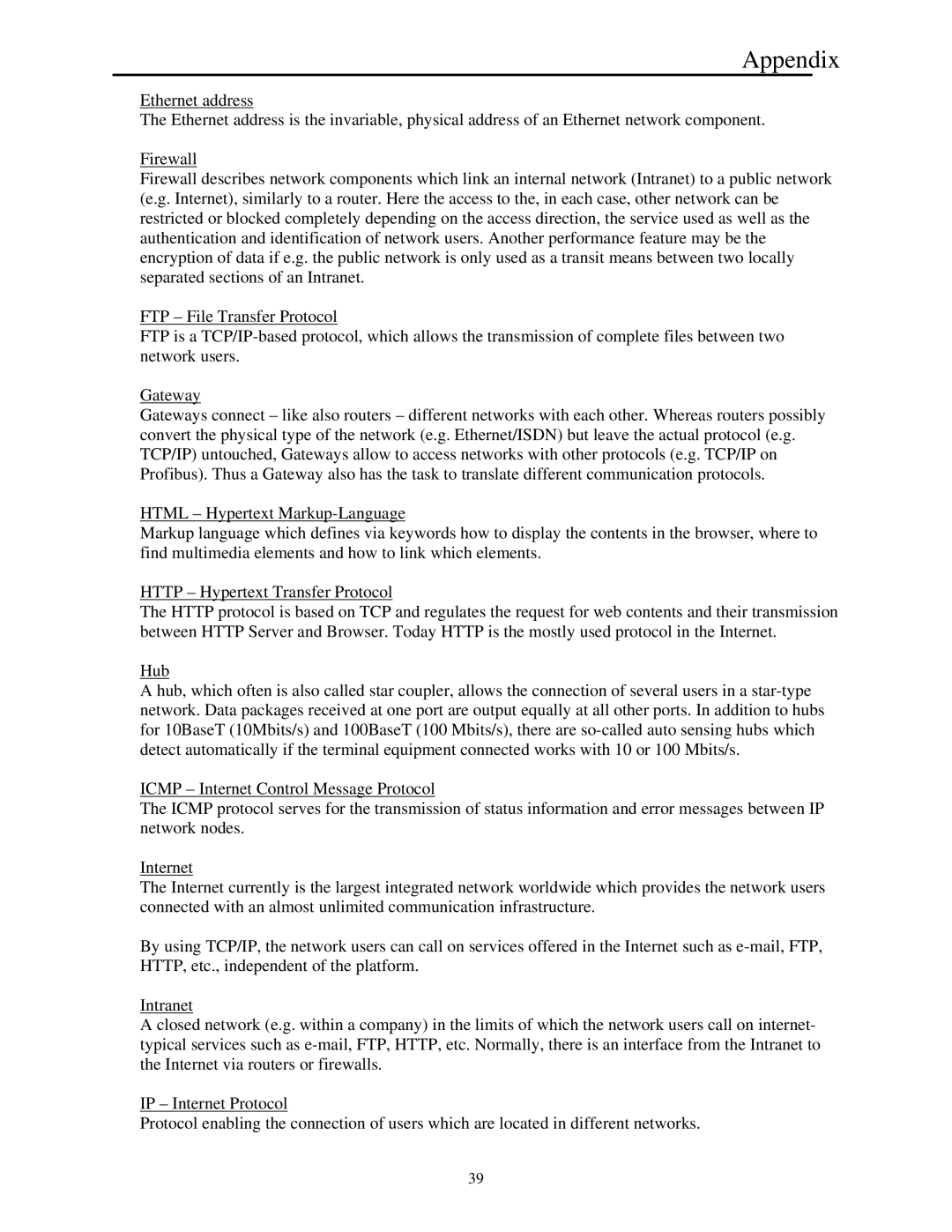Appendix
Ethernet address
The Ethernet address is the invariable, physical address of an Ethernet network component.
Firewall
Firewall describes network components which link an internal network (Intranet) to a public network (e.g. Internet), similarly to a router. Here the access to the, in each case, other network can be restricted or blocked completely depending on the access direction, the service used as well as the authentication and identification of network users. Another performance feature may be the encryption of data if e.g. the public network is only used as a transit means between two locally separated sections of an Intranet.
FTP – File Transfer Protocol
FTP is a
Gateway
Gateways connect – like also routers – different networks with each other. Whereas routers possibly convert the physical type of the network (e.g. Ethernet/ISDN) but leave the actual protocol (e.g. TCP/IP) untouched, Gateways allow to access networks with other protocols (e.g. TCP/IP on Profibus). Thus a Gateway also has the task to translate different communication protocols.
HTML – Hypertext
Markup language which defines via keywords how to display the contents in the browser, where to find multimedia elements and how to link which elements.
HTTP – Hypertext Transfer Protocol
The HTTP protocol is based on TCP and regulates the request for web contents and their transmission between HTTP Server and Browser. Today HTTP is the mostly used protocol in the Internet.
Hub
A hub, which often is also called star coupler, allows the connection of several users in a
ICMP – Internet Control Message Protocol
The ICMP protocol serves for the transmission of status information and error messages between IP network nodes.
Internet
The Internet currently is the largest integrated network worldwide which provides the network users connected with an almost unlimited communication infrastructure.
By using TCP/IP, the network users can call on services offered in the Internet such as
Intranet
A closed network (e.g. within a company) in the limits of which the network users call on internet- typical services such as
IP – Internet Protocol
Protocol enabling the connection of users which are located in different networks.
39
